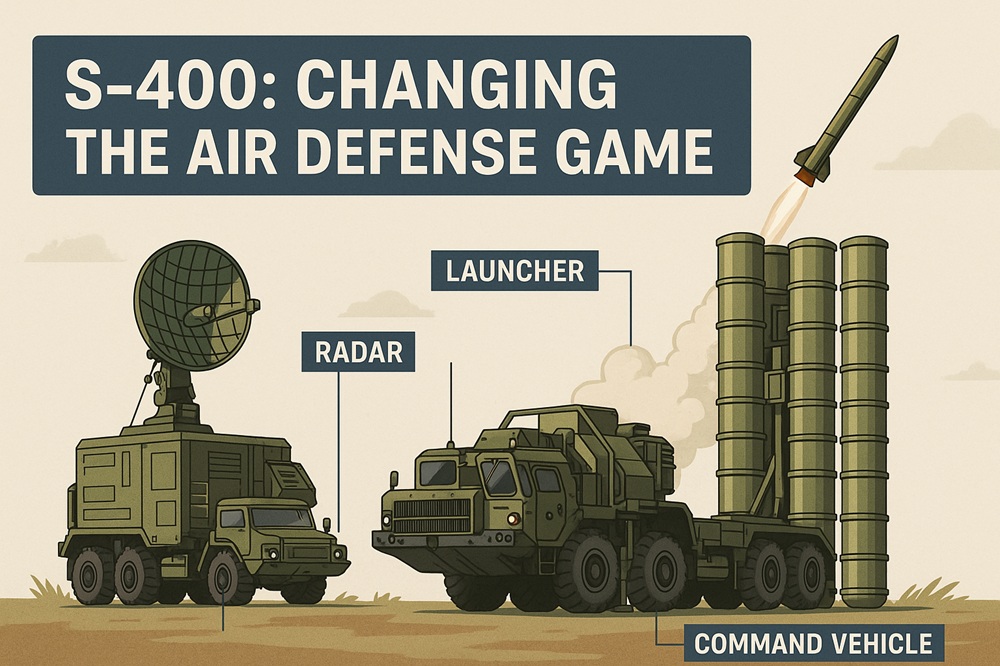In an era where aerial threats are evolving rapidly—from stealth aircraft to ballistic and cruise missiles—nations are investing heavily in cutting-edge air defense systems. Among these, the Russian-made S-400 Triumf stands out as one of the most advanced and controversial surface-to-air missile (SAM) systems in the world today.
What is the S-400?
The S-400 Triumf (NATO reporting name: SA-21 Growler) is a mobile, long-range surface-to-air missile system developed by Russia’s Almaz-Antey. Introduced into service in 2007, it was designed to detect, track, and destroy a wide variety of aerial targets including aircraft, drones, cruise missiles, and ballistic missiles—even stealth aircraft.
Unlike its predecessors, the S-400 can engage multiple targets simultaneously at various ranges and altitudes. It is considered a significant upgrade over the previous S-300 series, providing enhanced detection, faster deployment, and a wider range of missile options.
Key Capabilities
Here’s a breakdown of what makes the S-400 so formidable:
Detection Range: Up to 600 km for surveillance radar.
Engagement Range: Up to 400 km depending on the missile type.
Altitude Coverage: Targets flying as high as 30 km and as low as a few meters.
Multi-targeting: Can track up to 80 targets and engage up to 36 simultaneously.
Missile Variety: Can fire four different types of missiles, each designed for specific ranges and threats.
Strategic Importance
The S-400 system has redefined how countries think about air defense. Its ability to create an "anti-access/area denial" (A2/AD) bubble makes it a powerful deterrent. In simple terms, it allows the operator to control and potentially deny enemy aircraft access to a significant airspace—without deploying fighter jets.
This makes it especially attractive to countries with security concerns about neighboring air superiority or the presence of foreign military forces nearby.
Global Impact and Controversy
The system's export has caused geopolitical friction, especially between Russia and NATO countries. Notably:
India signed a $5.4 billion deal with Russia for the S-400 despite U.S. warnings and potential sanctions under the CAATSA (Countering America's Adversaries Through Sanctions Act).
Turkey, a NATO member, purchased the S-400 in 2017, leading to its expulsion from the U.S. F-35 fighter jet program.
China and Saudi Arabia have also shown interest, signaling a shift in the global arms market.
Why the S-400 Matters
The S-400 isn’t just a weapons system—it’s a strategic asset. It allows countries to bolster their sovereignty and deter adversaries without the need for expensive air forces. It also poses complex questions for military alliances, as its presence can compromise interoperability and radar signature data of allied aircraft.
Conclusion
Whether viewed as a breakthrough in defense technology or a disruptive force in global geopolitics, the S-400 Triumf is undeniably reshaping the modern battlefield. As more countries consider integrating such systems, debates about sovereignty, alliances, and military balance are only set to intensify.
